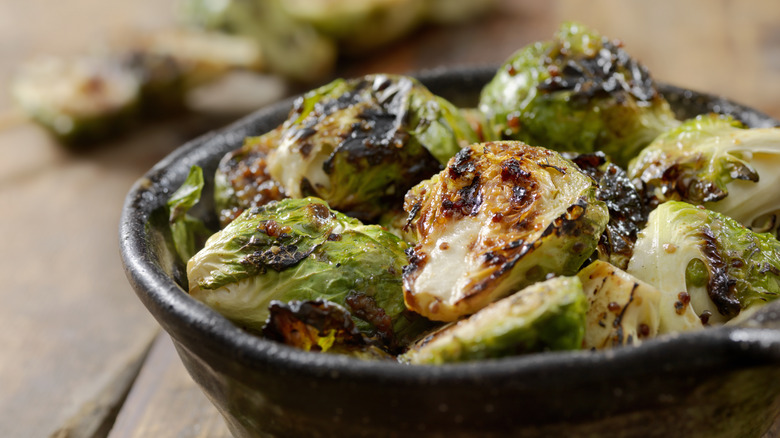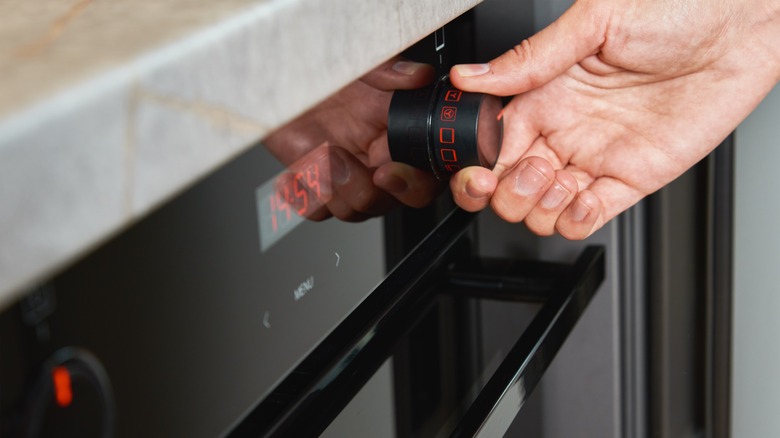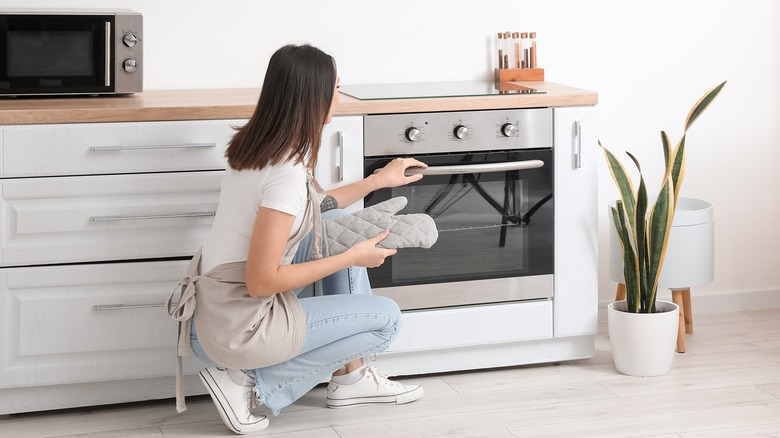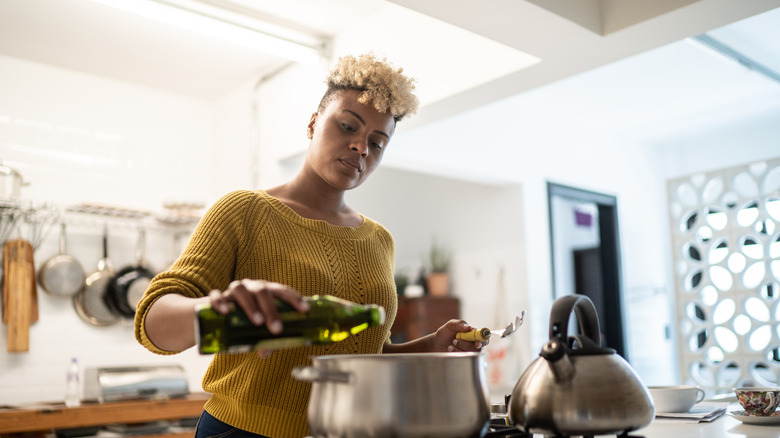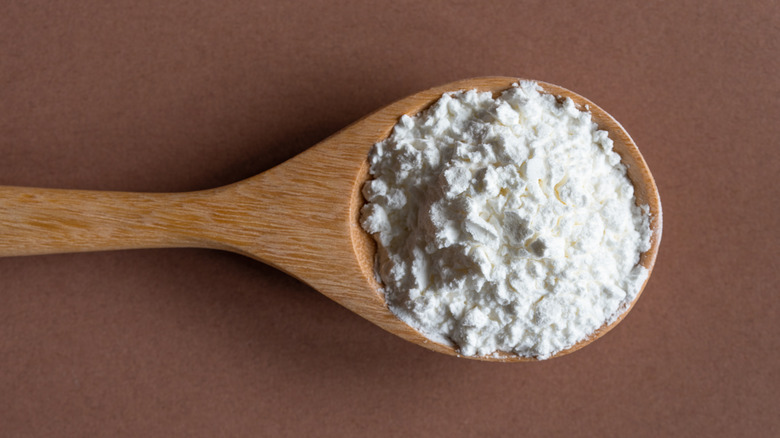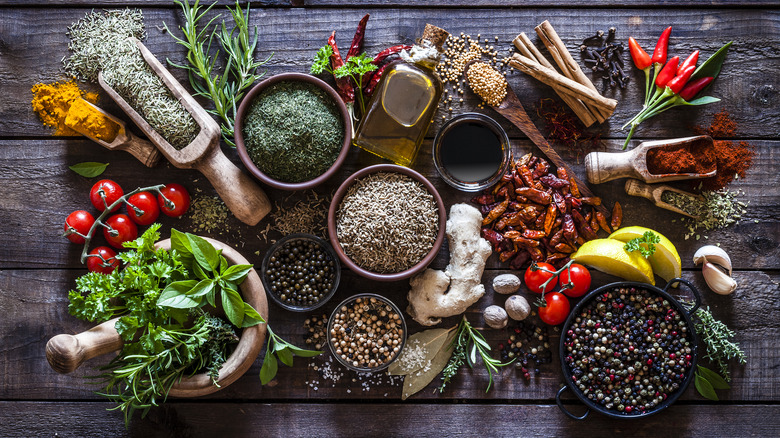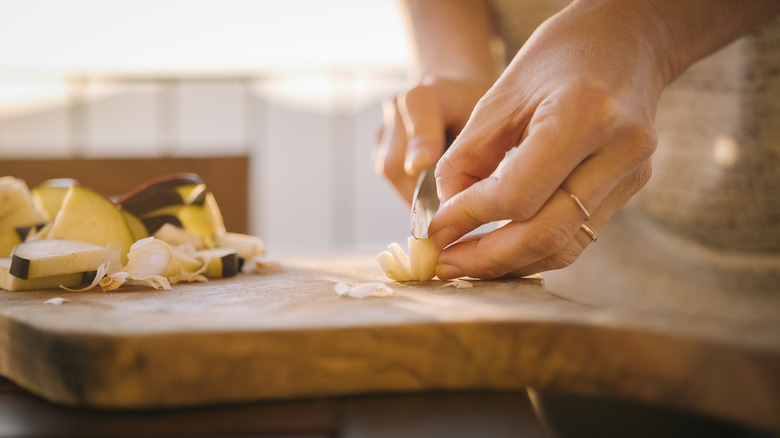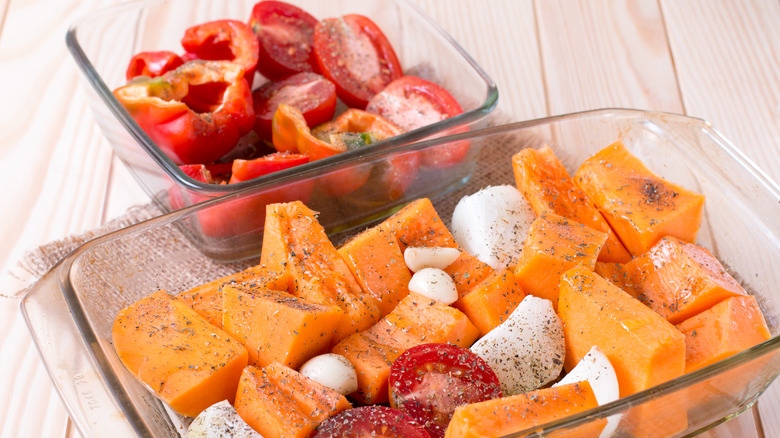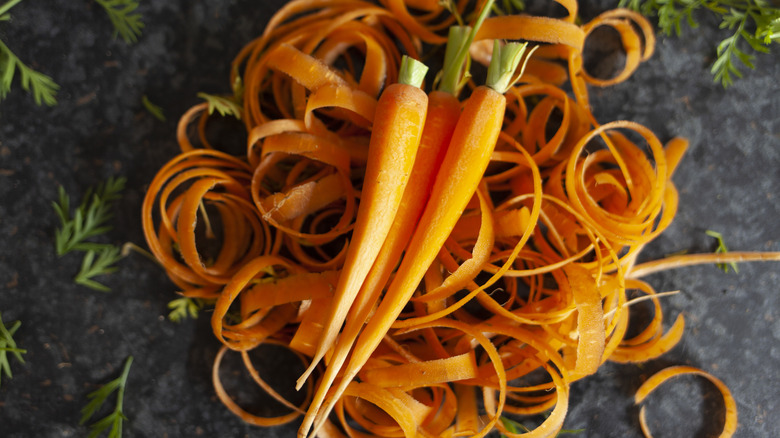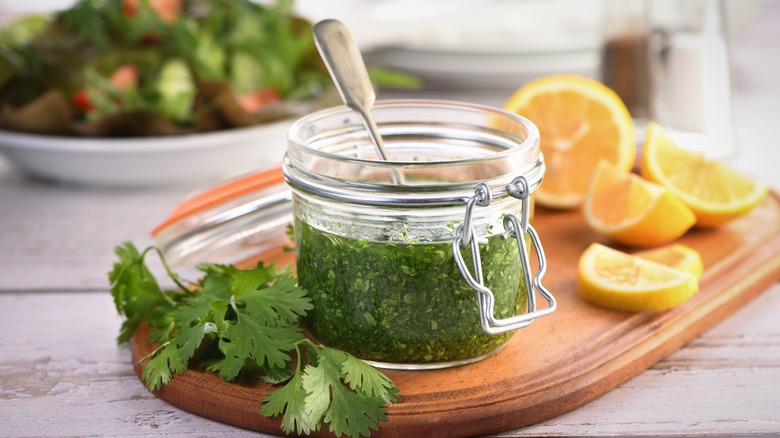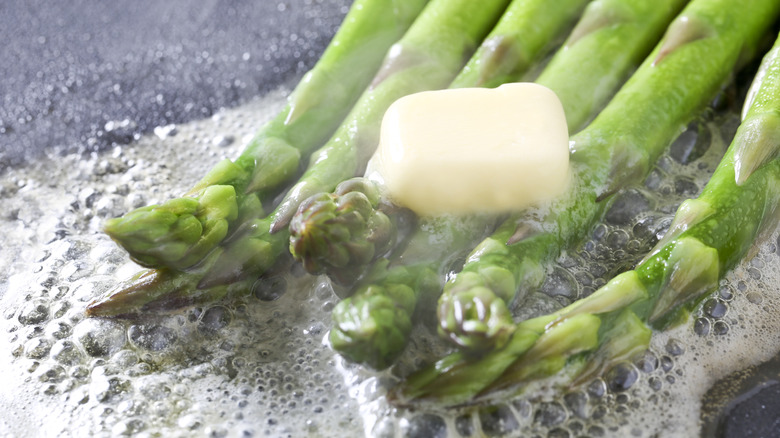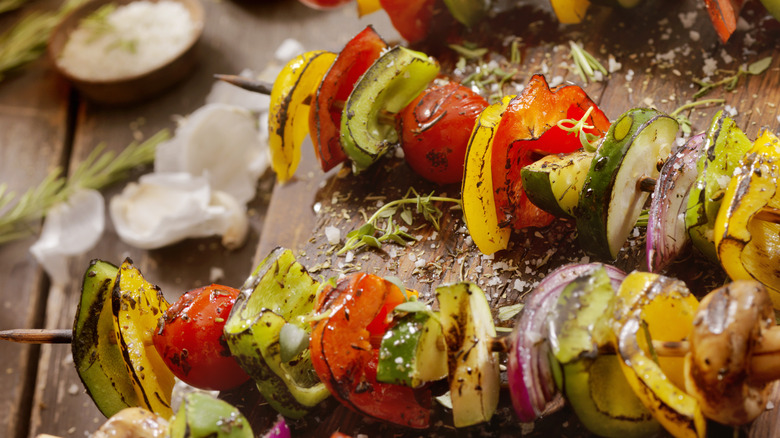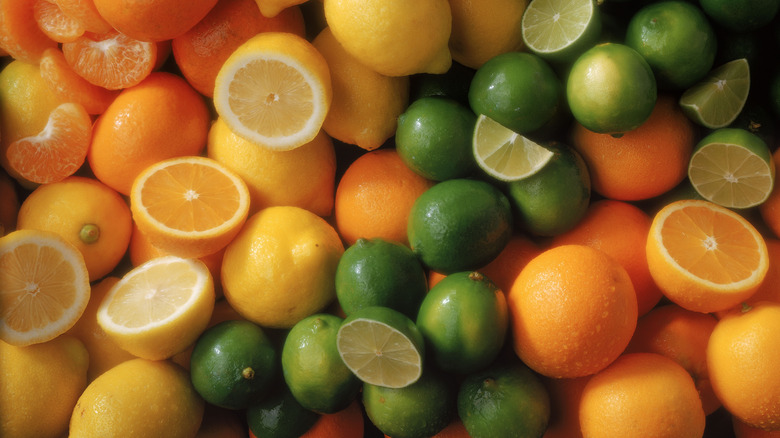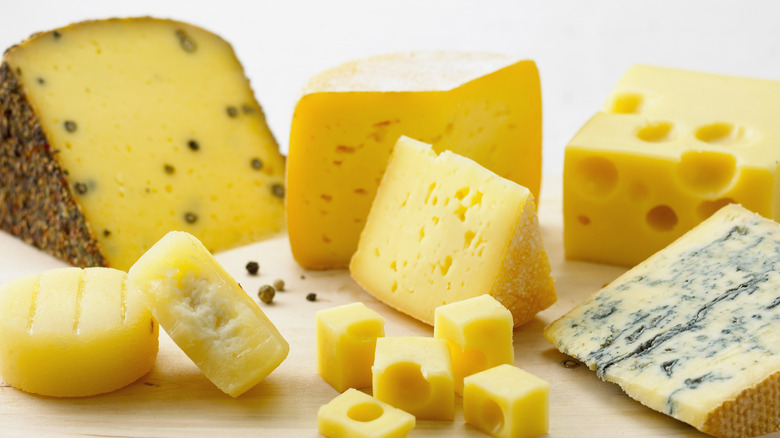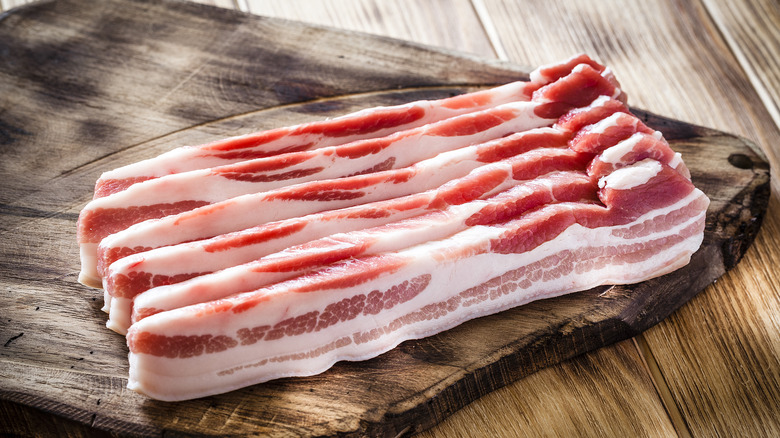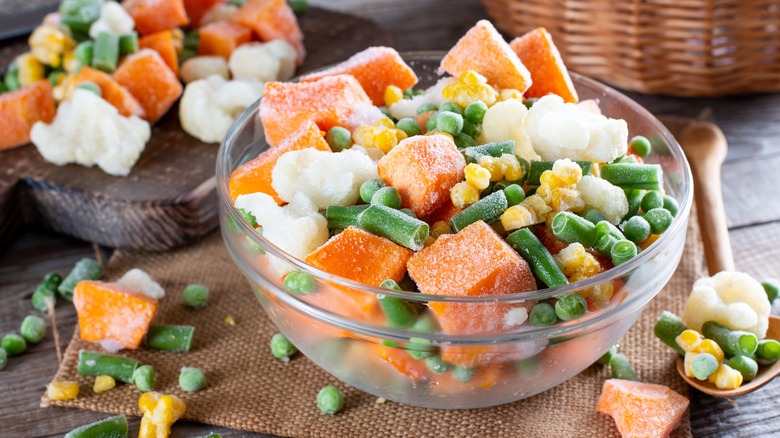The 15 Mistakes Keeping You From Perfect Roasted Vegetables
If you, like this writer, constantly have a batch of roasted veggies in the oven (and the groans of resigned children in your ears), then you're always on the lookout for better ways to get the job done. The good news is, roasted veggies are not only one of the most versatile additions to your meal plan out there, they are also endlessly easy to tweak and update.
The ways to optimize your vegetables range according to the time of year, variety, oven temperature, fat of choice, spices, and meal plan. Yet even for the most seasoned chef, questions remain. Should you bake or broil? Should you go low and slow or hot and heavy? How do you make them kid-friendly? (No really, how?)
Today's your lucky day, because you're closer to oven-roasted veggie perfection than you thought. This guide will answer all of these queries and more, from where to get your vegetables to how to store them until you're ready, and from what to put on them to what to serve them with. Quit making these mistakes and you'll never be lost for a meal plan again.
Never put veggies in a cold oven
It might be tempting to save some time by putting vegetables in a cold oven, but if you wait to preheat, you'll get better results. That's because heating up the veggies as quickly as possible is the key to caramelization, that sweet and yummy browning effect that is the only reason people even like roasted things in the first place. While vegetables aren't as sensitive as, say, a yeast dough recipe (for which the heat has implications for the chemical side of baking), it still matters.
If you want to roast your veggies more quickly, though, don't turn up the oven. Like putting vegetables in cold, this changes the cooking process, and not in a good way. You're likely to simply burn them. Instead, if you're in a hurry, cut your vegetables smaller. This increases the surface area-to-inside ratio, making more heat available for cooking. Just make sure to watch the pan closely, as many recipes are written with bigger chunks in mind.
Stop using bake and broil interchangeably
Baking and broiling are both good approaches for cooking roast vegetables, but you can't just throw things in willy-nilly and hope for the best results. For instance, broiling is not an appropriate choice for winter vegetables such as carrots, potatoes, turnips, beets, rutabaga, or celeriac ... no matter what you can dig up on the blogosphere. (Yes, pun intended.) Broiling runs the risk of burning them on the outside while that starchy un-goodness persists within. Instead, you should cook these at a lower temperature to ensure they are done all the way through and caramelized on the outside.
On the other hand, delicate veggies benefit from a blast of heat that crisps the outside without turning the inside to an Oliver Twist-like gruel. Think asparagus, pattypan squash, or mushrooms. (While the latter is not technically a veggie, one should always treat it as such.) Also make sure when broiling that you never leave the pan unattended.
Whether baking or broiling, start your rack off in the middle of the oven when you're first testing a veg recipe. If you find it needs to be moved closer (for broiling) or farther down (for baking), you can do it next time.
Don't be afraid to go full-bore with fat
It's possible to take healthy eating too far. In fact, it's likely when it comes to vegetables. Here's the thing: They're already healthy, okay? So don't avoid the fat that makes them worth eating.
Indeed, our bodies need fat to digest vegetables effectively, and fats have been shown to increase the absorption of a range of nutrients, according to a study conducted at Iowa State University. Another study published in the journal Frontiers in Nutrition shows that plant-based fats such as nuts and olive oil are not associated with weight gain and are associated with healthier gut microbiomes.
Feel free to add oil to your vegetables before popping them in the oven, along with salt and seasonings to taste. The best way to make sure each veggie has a thorough coating of fat and flavor is to use your hands rather than a spoon, really massaging the oil in. If you want, you can try dry roasting and then adding oil to your vegetables afterward.
Don't forget cornstarch
This one's a gimme: cornstarch. Yes, the humble pudding ingredient and soup thickener that sits in the back of your cabinet until you pull it out for the, like, two kitchen uses for which it's known. Not true, btw: Cornstarch is also a versatile ingredient, the secret to good bao, a substitute for eggs, and the best way to set your heretofore-runny berry pies. But that's another story. Today's story is this: Cornstarch is your best friend if you like a nice crisp to your roasted vegetables.
Why? Cornstarch gets firm and brittle when it cooks due to the presence of amylose, which creates an unbelievably crispy exterior that takes vegetables from blah to beatific. Make sure you don't just sprinkle the starch on, though, which could leave a powdery residue on your cooked veggies. Instead, mix about 1 tablespoon of cornstarch for every pound of veggies into the oil you were going to toss them in. If you prefer to go oil-free, use enough water to create a runny liquid that you can pour over your roasting vegetables, then mix to distribute evenly.
Never skimp on seasonings
Roasted vegetables are nice, but without flavorings, they're insipid. Think of vegetables as vessels for fat, salt, herbs, and spices: low-calorie nutrient-bombs that cry out for added flavor. You can use fresh or dried herbs, flavored salts, marinades (discussed below), sweeteners like maple syrup or honey, pungent vinegars, and more. Make sure if you're going to roast vegetables in a marinade or oil concoction (as opposed to dry), that you use enough liquid to coat everything, but not so much that it pools on the bottom of your pan, which can make them soggy.
You should also make sure to cut your veggies small enough that each piece can get lots of seasonings. Large chunks put you at risk of a finished result that has bland insides, and no one wants that. While you're at it, it's worth taking the time to learn which vegetables you've been cutting wrong this entire time and update your approach.
Quit using minced garlic
Garlic burns, and not in a good way like chili pepper or pickled ginger. Instead, it burns to a crisp quite easily in the oven, and all you'll get out of it is a bitter carbon flavor that ruins your entire batch of veggies. Rather than mincing up garlic and mixing it into your roast veggies at the outset as many recipes recommend, use garlic powder instead. While you lose some of the pungent freshness of garlic cloves, you lose all of the nasty burnt-ness using this trick.
If you really need your fresh garlic, though, you can toss it on at the end (assuming no one in the house has heartburn), put it in halfway through while stirring your veg, or throw in whole cloves, which will roast up sweet and tender like the veggies around them. That way, you can avoid burning your garlic, which cooks at a lower temperature than other vegetables.
Don't pair different textures together
Yes, potatoes and zucchini are delicious together. So are carrots and red peppers. The problem? Each of these pairings includes a soft summer vegetable and a tough winter vegetable. That means cooking them together will unfailingly result in either an undercooked or an overcooked vegetable ... or both. If you want to eat them together, you're going to have to cook them separately.
Thus, when roasting vegetables, it's best to match like with like. There's a general timetable for veggie types, so much like grouping garden plants with the same watering needs, be sure to follow it. At 425 degrees Fahrenheit, root vegetables and onions typically need about 45 minutes; winter squash an hour; and cruciferous veggies, tomatoes, asparagus, and summer vegetables about 20 minutes. If you must mix those with different roasting times, then add them in stages as appropriate to avoid any over- or undercooking. Make sure each batch is separately seasoned and/or oiled for best results.
Don't peel all the veggies
Plenty of vegetables need peeling before you put them in the oven. Some of this is up to personal preference (for instance, sweet potatoes have very nutritious skin and are good both peeled and unpeeled), but for others, there's a right answer. Do peel russet potatoes; don't peel Yukon gold. Do peel beets, turnips, and rutabagas; don't peel carrots. It's almost never a good idea to peel summer veggies such as zucchini or eggplant, as their skin helps keep the soft flesh together rather than turning into unrecognizable mush.
When preparing onions, you should make sure to remove at least the top two layers of an onion to ensure crunchy sweetness. If you want to avoid them falling apart in the oven, you can trim the bottom (where the roots come out) off very close to the end, leaving some of the firm core in place. Then when you halve or quarter your onions, all the layers will stay together.
Stop over-marinating
Vegetables are like any other food: They do well with time to soak up flavors. For that reason, a marinade is a lovely way to prepare your vegetables before baking or broiling. However, unlike meat, vegetables aren't sturdy enough to stand up to a long time in the ol' sauce. The acids in marinade start to break down the veggies right away, so you'll want to cap the process at 30 minutes. For softer choices such as mushrooms and zucchini, you shouldn't marinate your vegetables for longer than 30 minutes.
Now to the best part: flavorings. Marinades are a lot like dressings, employing the chemistry of emulsification to combine oil and liquid together into a smooth, creamy blend that coats your vegetables and makes their insides soft and tasty. Feel free to take inspiration from your main course for the flavor of your marinade, from pungent Dijon for French cooking to smoky cayenne for Tex-Mex. You can also use a basic vinaigrette as a marinade, which works just as well.
Quit making boring veg!
Kids have a bad rap for being anti-veg, but that's unfounded. What children hate are the boring, unadorned foods that adults will choke down under the iron fists of their superegos. Unfortunately, superegos are, well, super-underdeveloped in children, so they need a little more to go on. In order to make kids like your veggies, you just need to add flavor.
The good news is, roasted vegetables are naturally sweet due to caramelization, so right there they've got a leg up on their steamed cousins. Try winter vegetables, whose high sugar content makes them even tastier. Parsnips, turnips, and carrots are all good choices. Roast them in the oven at 425 to 450 degrees Fahrenheit, a temp that is high enough to initiate caramelization, but won't burn the outside without cooking the inside. For a little extra sweetness, you can add balsamic vinegar reduction at the outset.
Fat like butter, oil, and bacon grease also help with the flavor factor. Peanut oil also has a nice sweet flavor, but make sure to test it before using, as some peanut oils are brutally nutty and will completely take over.
Don't consign skewers to the grill
We eat with our eyes first, they say. Sometimes what stands between ordinary roasted vegetables and dinner party perfection is simply the presentation. When your snooty foodie boss and his wife are coming over, it's natural to feel a little sheepish just dumping some baked veggies on their plates. Instead, go for a more visually inspiring approach, like vegetable skewers.
Since most of the work to prepare these is in the chopping, not the threading, it doesn't take much extra time to make your vegetable side look approximately 57 times more impressive. Simply prepare your vegetables as you normally would, but make the chunks at least an inch across so you can put them on a skewer without causing the dreaded crack. Make sure to keep like vegetables with like vis-à-vis cooking times, then put them in the oven or under the broiler for the allotted amount of time.
The best plant-based foods for skewering include mushrooms, cherry tomatoes, bell peppers, zucchini, sweet onion, shallots, and eggplant. If you're feeling extra creative, feel free to throw some firm tofu, pineapple, watermelon, or figs into the mix. Always soak your skewers for half an hour before threading the vegetables, as this will prevent them from burning in the oven. You should do the same on the grill or even when using a grill pan on the stovetop.
Never be afraid of citrus
Lemons are a wonderful way to bring a bright note to vegetables, and limes can zing up an otherwise boring batch of Brussels sprouts. Even oranges can jazz up your winter vegetables, especially when combined with an herb such as thyme. Because vegetables often have such a mild flavor on their own, the sharp sweet tang of citrus can lend interest to a dish that goes well with meats, pasta, or a lighter meal of bread and cheese.
The key to citrus is not to overdo it; you want to lighten up the taste of the vegetables, not add another competing flavor. Zest is a great way to do that, though juice in a marinade or baste can also do the trick. You can even try making an oil blend that you apply to the end after dry-roasting your vegetables, as this will keep zest from burning in the oven.
Be careful of other ingredients when using citrus. While garlic and lemon go well together, it's a tough combo with orange. Lime is also better on its own or with smoky spices than it is with strong garlicky or mustardy flavors. As for orange, it likes to be the star of the show, but makes an exception for culinary herbs.
Don't abandon your best friend cheese
While "add cheese" sounds like the kind of phoned-in advice you could give for literally any dish ever, up to and including desserts and cocktails, there's actually a very good reason to add it to your roasted vegetables. Cheese contains a high fat content, which keeps the vegetables moist and protected from the desert-like heat of your oven. It also contains lots of salt, which brings out the natural flavor of the veggies.
Don't confine yourself to the traditional ones such as Parmesan, either. Swiss cheese is excellent on broccoli, while feta is delicious broiled on summer vegetables. Pecorino, Asiago, Manchego, and sharp cheddar are all good options as well.
However, adding a bunch of fat and salt means you must tone down these ingredients from other sources. Go lighter on the oil and seasonings, toss your veggies together, and layer them in your pan. Then add cheese to the top and stick it in the oven to bake (winter vegetables) or broil (summer vegetables). Watch the pan, though, as cheese can burn easily. It's best to place your pan in the middle of the oven.
... Or your best friend bacon
By the same token as adding cheese, tossing in bacon can bring your vegetables to the next level. While bacon isn't a great additive to light summer vegetables, whose flavor can quickly become overpowered, it's the perfect addition to wintry root veggies, cruciferous options, or Brussels sprouts. Since their flavor is more like high-class dirt on a good day (kidding, mostly), a little bacon is honestly helpful here.
The trick to using bacon with your roasted vegetables is to cook it ahead of time, as it will not crisp up in the oven, where the presence of water-rich produce is likely to make it soggy and gross. Fry the bacon in a pan, then reserve the crispy meat and pour the fat over your vegetables, tossing it with salt and pepper. Even yummier, buy slab bacon and cut it into matchstick-thin lardons, then follow the same process. It's better than strip bacon from the package, because it is both freer of gristle and easier to cook evenly. When your veggies come out of the oven, sprinkle the crisped bacon on top at the end and stir through to warm.
Never thaw frozen vegetables first
Although you'd think frozen veggies shouldn't go right in the oven, they actually do just fine. By the same token as frozen pizza and fish sticks do well going straight from freezer to rack, frozen vegetables don't have time to get all mushy this way. Instead, they start to cook right away, maintaining their structural integrity and enjoyable bite.
The trick is to avoid adding any additional moisture to your vegetables before putting them in the oven. Frozen veg is already waterlogged from being blanched and flash-frozen, so oiling or applying a marinade are both contraindicated. Instead, add your veggies to a dry sheet pan lined with parchment paper, cook them at 400 degrees Fahrenheit for half an hour, then pull them out for a quick application of oil and seasonings. Put them back in for 10 minutes, and boom: manna from heaven. This even works with famously mushy options such as frozen Brussels sprouts.
